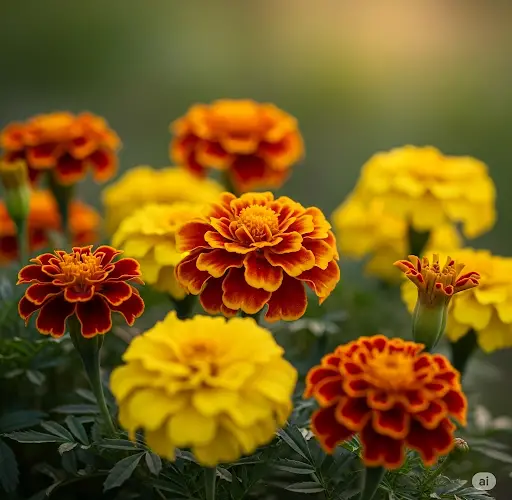Flowers bring life, beauty, and color to any garden or home. Whether you’re tending roses, petunias, geraniums, or indoor potted blooms, there’s nothing more disheartening than watching your plants wilt, fade, or stop blooming. Fortunately, there’s a simple, natural solution that can bring tired, dull, or struggling flowers back to vibrant life—and all it takes is one teaspoon of the right ingredient.
This method is inexpensive, safe for all flower types, and has been used by home gardeners to revive plants and stimulate heavy blooming. Read on to learn what this miracle teaspoon treatment is, how it works, and how to apply it correctly.
Why Flowers Stop Blooming and Turn Yellow or Pale
Before diving into the solution, let’s understand the common reasons flowers lose their vibrant color or stop blooming:
-
Nutrient Deficiencies: One of the most common causes of pale, yellowing foliage and reduced blooms is a lack of essential nutrients, especially phosphorus, magnesium, and iron.
-
Depleted Soil: Over time, especially in pots or garden beds with repeated planting, the soil becomes depleted and compacted, leading to poor root growth and reduced nutrient uptake.
-
Overwatering or Poor Drainage: Excess moisture in the soil can suffocate roots and promote rot, leading to drooping, weak plants.
-
Lack of Sunlight: Even flowering plants that tolerate partial shade still require a certain amount of sunlight to produce energy for blooms.
-
Stress: Transplant shock, heat waves, sudden cold, or pest attacks can all temporarily halt blooming.
Rather than replacing your plants or resorting to synthetic fertilizers, you can correct most of these issues with a teaspoon of natural nutrition.
The One-Teaspoon Solution: Epsom Salt
The “magic teaspoon” is none other than Epsom salt—a natural mineral compound made up of magnesium and sulfur. When sprinkled around flowers or dissolved in water and applied to the soil, Epsom salt works wonders.
Why Epsom Salt Works:
-
Magnesium helps plants absorb other vital nutrients like nitrogen and phosphorus, which are essential for lush green foliage and strong root systems.
-
Sulfur supports the development of proteins, enzymes, and vitamins in plants, contributing to vibrant color and increased resistance to pests and diseases.
-
It enhances chlorophyll production, which is critical for keeping leaves green and photosynthesis efficient.
How to Use It
Materials Needed:
-
Epsom salt (magnesium sulfate)
-
Watering can or a container
-
Optional: Spray bottle for foliar feeding
Application Steps:
-
Direct-to-Soil Method:
Simply sprinkle 1 teaspoon of Epsom salt directly under the base of each flower plant. Water lightly to help it dissolve and absorb into the soil. -
Dissolved Method:
Mix 1 teaspoon of Epsom salt per liter of water. Use this solution to water your plants at the base once every 2 weeks. -
Foliar Spray Method (for quick results):
Dissolve 1 teaspoon of Epsom salt in a spray bottle with 1 liter of water, and spray directly onto the leaves. This allows plants to absorb magnesium and sulfur through the foliage.
What to Expect After Treatment
Within a few days to a week, many gardeners report seeing:
-
Greener leaves and stronger stems
-
New buds forming even on previously bare plants
-
More vibrant flower color
-
Longer blooming cycles
-
Healthier, more resilient plants
Plants that had been stagnant or showing signs of decline often bounce back quickly, producing lush new growth and brilliant blossoms.
Best Flowers for This Treatment
While nearly all flowering plants benefit from magnesium, the results are particularly striking on:
-
Roses
-
Geraniums
-
Petunias
-
Marigolds
-
Hibiscus
-
Orchids
-
Potted houseplants like peace lilies and African violets
It’s also effective on flowering shrubs, hanging baskets, and container arrangements.
Additional Flower Care Tips
For long-term blooming success, pair the Epsom salt method with other good gardening practices:
-
Use well-draining soil and ensure your containers have drainage holes.
-
Feed flowering plants monthly with a balanced organic fertilizer.
-
Deadhead spent blooms to encourage new flower production.
-
Keep an eye out for pests like aphids or spider mites, which can stunt flowering.
-
Ensure proper lighting based on your plant’s needs. Most flowering plants thrive in at least 4–6 hours of sun per day.
Conclusion
If your flowers look tired, faded, or stopped blooming altogether, don’t give up. A single teaspoon of Epsom salt could be the quick and easy solution to revive your garden. It’s natural, safe, and widely praised by experienced gardeners for its powerful effect on plant health and bloom production.
This one small change can make a world of difference in your flowerbeds and pots. Try it today and enjoy seeing your flowers flourish like never before—green, strong, and blooming beautifully all season long.


